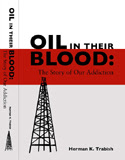ORIGINAL REPORTING: Designing The Best System For Distributed Resources
Rethinking California Utilities’ Distribution Systems
Herman K. Trabish, May 31, 2022 (California Current)
Editor’s note: The bigger the distribution system contribution to net zero emissions, the less the pressure will be on building utility-scale clean and new transmission.
As California moves to accommodate high flows of bi-directional distributed energy resources (DER), distribution system reform is needed, according to a white paper introducing a new series of regulatory workshops on the distribution system.
Identifying reform is essential to meeting the commission’s 2021 High DER Future Proceeding order, California Public Utility Commission Energy Division Staff Rob Peterson said during the first in a series of stakeholder engagement workshops on May 3.
The objective of the order (R.21-06-017) and workshops is to “guide public and private sector investment for a high DER future” while “integrating equity and access to DER considerations,” Peterson added.
DER are renewable generation resources that connect to lower voltage power lines, and include electric vehicles, energy storage, energy efficiency, and demand response technologies, according to the California Public Utilities Code.
Though currently threatened by reconsideration of rooftop solar supports, California DER growth will accelerate, workshop participants agreed. Customer demand, the 2045 zero-emissions goal, technology evolution, and falling prices will be drivers, the white paper added.
California’s 2021 Integrated Energy Policy Report (IEPR) forecasts statewide installed distributed solar capacity to increase from 2022’s 14,048 MW to 24,721 megawatts in 2030, according to California Energy Commission spokesperson Michael Ward. Distributed energy storage capacity is projected to increase from 2022’s 740 MW to 2,587 MW in 2030, he added… click here for more


 click to enlarge
click to enlarge click to enlarge
click to enlarge click to enlarge
click to enlarge

0 Comments:
Post a Comment
<< Home